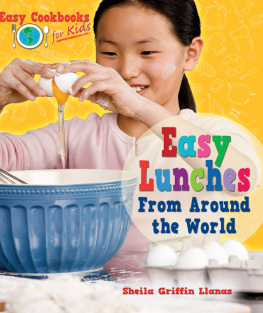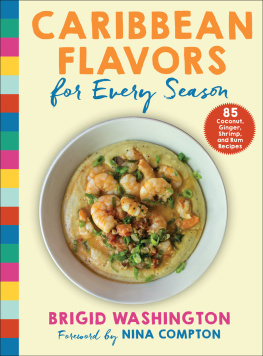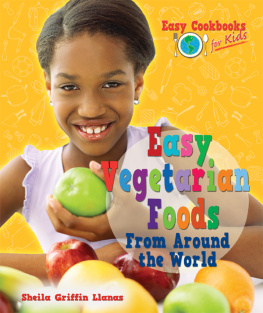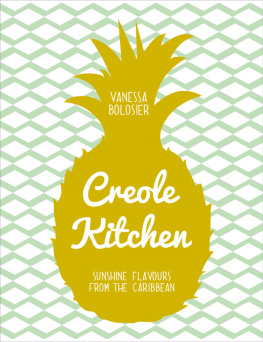Cook yummy breakfasts from around the worldits easy!
Have you ever tried googs and soldiers? How about ful medames? If you enjoy trying new foods and learning about the countries they come from, this book is for you!
Not only will young readers enjoy reading the books in this series, but they will also want to make some of the recipes that fi ll the pages.
Allan A. De Fina, PhD
Past President of the New Jersey Reading Association
Chairperson, Department of Literacy Education
New Jersey City University
Jersey City, New Jersey
Cooking for me isnt just a career, its my passion. Every day I learn something newits about having fun and being creative.
Jenna Maruszak,
Culinary Institute of America Alum 2007,
Banquet Chef at Indian Trail Club,
Franklin Lakes, New Jersey
About the Author
Sheila Griffin Llanas writes books for young people and adults. She likes to research and she loves to cook. Her favorite places are the library and the kitchen.
Warning: The recipes in this book contain ingredients to which people may be allergic, such as peanuts and milk.
Every day, in countries around the world, people wake up and eat breakfast. What do you eat for breakfast? In the United States, cereal and toast with juice or milk are typical breakfast foods. In other cultures, people eat rice, soup, dried beans or vegetables for the first meal of the day. Breakfast can be healthy, delicious, and fun to eat. Have fun trying new flavors! Maybe you will find some new breakfast traditions.
As you use this cookbook, you will learn about countries around the world. Eleven recipes come from eleven countries or regions. When you follow a recipe, you can read about the country the dish comes from and the unique ingredients that flavor it.
Each recipe in this book has specific directions on W HAT Y OU N EED and W HAT T O D O . You will also find cooking tips. The tips help you to be safe and have fun in the kitchen. They will make you a more skillful chef.

Image Credit: Shutterstock.com
Whenever you are in the kitchen, there are important safety rules to follow:
1. Always ask a responsible adult for permission to cook. Always have an adult by your side when you use the oven, the stove, knives, or any appliance.
2. If you have long hair, tie it back. Remove dangling jewelry and tuck in any loose clothing.
3. Always use pot holders or oven mitts when handling anything on the stove or in the oven.
4. Never rush while cutting ingredients. You dont want the knife to slip.
5. If you are cooking something in the oven, stay in the house. Always use a timerand stay where you can hear it.
6. If you are cooking something on the stove, stay in the kitchen.
7. ALLERGY ALERT! If you are cooking for someone else, let them know what ingredients you are using. Some people have life-threatening allergies to such foods as peanuts, dairy products, and shellfish.
- Wash your hands before you start. Make sure to also wash your hands after touching raw poultry, meat, or seafood and cracking eggs. These ingredients may have harmful germs that can make you very sick. Wash knives and cutting boards with soap and water after theyve touched these ingredients.
- Use two cutting boards (one for meat and one for everything else) to avoid getting any germs from the meat on other food.
- Rinse all fruits and vegetables under cool water before you use them.
- Make sure your work space is clean before you start.
- Clean up as you cook.

Image Credit: Shutterstock.com
- Read the recipe from beginning to end before you start cooking. Make sure that you have all the ingredients and tools you will need before you start.
- If you dont understand something in a recipe, ask an adult for help.
- To measure dry ingredients, such as flour and sugar, dip the correct size measuring cup into the ingredient until it is full. Then level off the top of the cup with the flat side of a butter knife. Brown sugar is the only dry ingredient that should be tightly packed into a measuring cup.
- To measure liquid ingredients, such as milk and oil, use a clear glass or plastic measuring cup. Make sure it is on a flat surface. Pour the liquid into the cup until it reaches the correct level. Check the measurement at eye level.
- Remember that measuring spoons come in different sizes. Be sure you are using a teaspoon if the recipe asks for it and not a tablespoon .
- Beat Mix ingredients together fast with a wooden spoon, whisk, or an electric mixer.
- Mix Blend ingredients together with a wooden spoon, an electric mixer, or a whisk.
- Stir Combine ingredients together with a wooden or metal spoon.

Image Credit: Photoalto/Photolibrary
Cooking has its own vocabulary. Here are some terms you should be familiar with:
bread (verb) To coat or cover with a layer of flour or crumbs before cooking.
brown (verb) To cook, usually in oil, until the food turns light brown.
chop To cut into bite-sized pieces.
condiments Food that add a flavorful accent to a dish, such as mustard and tartar sauce.
cube To cut into small, cube-shaped pieces.

Image Credit: Clipart.com
cuisine The type of cooking used in a particular country or area.
dice To cut into small pieces (smaller than chopped).
drizzle To pour a small amount of liquid in a stream over a dish.
fry To cook in hot fat in a pan on top of the stove.
garnish A bit of colorful food, such as parsley, that adds flavor to a dish and makes it look more attractive.
grate To shred into small pieces with a grater.
herbs Plants such as oregano and basil, used to give food a distinctive flavor. They can be used fresh or dried.
marinate (verb) To soak food in a dry rub or liquid blend of seasonings (a marinade) so that it absorbs the flavors and becoms more tender.

Image Credit: Clipart.com
mince To chop into tiny pieces.
saut To fry lightly in a small amount of oil or fat.
savory Highly flavored and tasty; not sweet.
seasonings Ingredients used to bring out the flavor of a food, such as salt, pepper, herbs, and spices.
simmer To cook over low heat just below the boiling point.
















